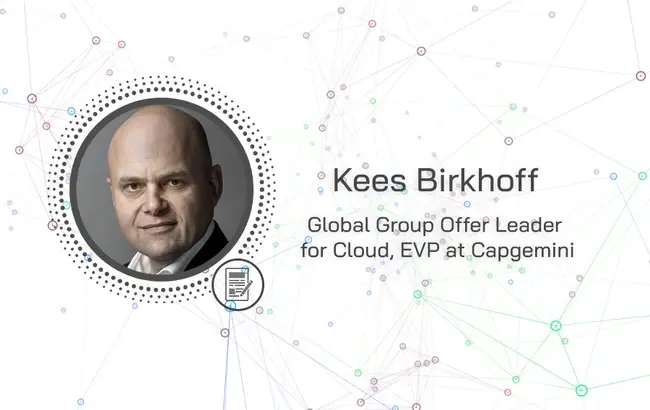This article is attributed to Kees Birkhoff, Group Offer Leader, Cloud at Capgemini

COVID-19 has rapidly accelerated the demand for cloud adoption in the enterprise and quickened the move to a digital-led world. Be it working remotely, shopping online or even chatting with family members. Presence-free living has become the norm with digital alternatives superseding physical presence are challenging the very need to appear in person.
For organizations, this has led to a sharp rise in demand for cloud services, from both consumers and employees, which has in turn, created increased pressure on IT teams. Presence-free living requires increased bandwidth, resilient cybersecurity and an agile, elastic infrastructure. While many organizations were working towards these innovations pre-pandemic, they were doing so at a more gentle pace, and have had to gain momentum fast.
As part of this, there’s an onus to shorten the timescale for agile and credible cloud deployments, without overrunning on budgets. Furthermore, with COVID-19 showing no sign of disappearing anytime soon, business leaders and IT teams are having to assess whether these cloud strategies are scalable and fit for purpose in the long term.
Fostering resilience through cloud economics
The need for cloud is clear – and the benefits of successful deployments have also been well documented. For example, retailers such as Carrefour have documented a 300% increase in demand for digital commerce. The opportunities for growth and boosted revenue through cloud deployment and innovation are endless.
While cloud is clearly the way forward, deploying it is complex and multi-faceted. Organizations need to move forward strategically and insightfully to reap the rewards. Throwing money at the cloud can result in shadow IT, leading to organizations paying for cloud repositories that are dormant or even out of use. Organizations need to create a cloud infrastructure based on visibility, elasticity, and agility – one that can grow and shrink with their enterprise needs swiftly and responsively.
This kind of infrastructure is most commonly created through a cloud economics framework – a four step model to cloud transformation that is fiscally and culturally aware. No matter where an organization is in their cloud journey, using the cloud economics model will assist them in getting the most from their investment.
Assess where you are on your journey: It is easy to overspend with cloud usage. It is therefore important, as a first step, that organizations gain total visibility into their cloud applications. This visibility will help organizations to understand what is being spent where, and whether some applications are idle and can be decommissioned. This step should also consider legacy systems; organizations should ask themselves if on premise resources can be retired in favour of cheaper, more scalable cloud deployments.
Rebuild, reface, transform: Once cloud opportunities and weaknesses have been identified, organizations must then begin to transform their infrastructure. This will involve rebuilding, refacing and decommissioning legacy systems and applications to create a more agile cloud ecosystem. As part of this, data centres – which are often an unnecessary cost drain – should be shut down in favour of cloud-based alternatives.
Adapt your culture: Moving to a cloud-first model requires both cultural and skill change from employees. Broadly, employees will need to be re-trained to use new applications. Moreover, specialist skills will need to be cultivated for cloud implementation, development and maintenance. Designing cloud-native applications, for example, is a growing business need that requires specialist dev-ops skills and an understanding of cloud infrastructure.
Re-assess and stay proactive: Cloud adoption is not a static function; just as technology is continuously evolving, so are the opportunities to use the cloud. To keep costs low and efficiency at its best, IT leaders and teams will need to continuously monitor cloud usage to ensure optimum productivity and make improvements where needed.
COVID-19 has accelerated the need for cloud adoption in the enterprise. The uncontrolled proliferation of an organization’s cloud environment, without proper tracking and accountability, can lead to high costs that negate the positive impact of the cloud. Through a cloud economics model, organizations can re-gain control over their cloud environment and spend, and answer the ever increasing demand for cloud-based services.







Comments ( 0 )